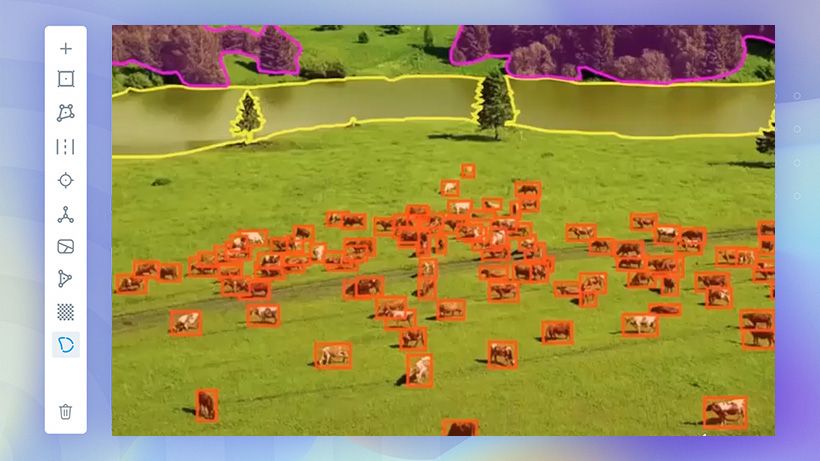Powerful Annotation Tools Support Livestock Management AI
The 21st century presents a number of challenges for food production. Today's food producers have to be mindful of issues like climate change and supply change instability in the near future. In the livestock management sector many farmers are turning to computer vision AI models to meet this challenge.
Smart livestock farming could help to increase yields and secure the future of the industry in a time of change. AI livestock monitoring systems help farmers and improve animal welfare, whilst promoting efficiency and productivity.
However, in order for computer vision to have a lasting impact in livestock management developers need precise AI training datasets. As a result, many AI companies in this industry are looking for annotation tools, like Keylabs, that offer unique and innovative features.
Firstly, this blog will look at some of the exciting computer vision use cases that are transforming livestock management. Secondly, we will identify some of the most important annotation methods. These annotation methods are essential for AI training in this industry. And finally, we will show how the right image and video annotation tool can guarantee powerful training datasets.
Computer vision applications for livestock management
Computer vision models can watch over livestock and give vital information to herd managers. Access to this data is transforming animal welfare and securing livestock rearing businesses:
- Aerial management: Computer vision equipped drones are being used to autonomously assess animal numbers across fields and farms. Drones are vital because they can cover large areas and reach inaccessible places. Integrated drone AI systems can alert herd managers when an animal is missing, which helps to keep the herd safe.

- Monitoring health and wellbeing: Computer vision models can monitor health and detect illness in herd populations. AI can be trained to identify unusual movements that are characteristic of illness or injury in animals. This in turn means that herd managers can intervene early to treat animals and reduce the spread of disease.
- Feeding rates: AI models can also track feeding rates. They do this by recognising when an animal is bending down to eat. This technology helps herd managers to know how well each member of the herd is eating. Lower rates of feeding can indicate poor health.
Key annotation methods
The important use cases described above are made possible by image and video annotation The following annotation methods are used by livestock management AI developers to create exceptional training data for their models:
- Polygon annotation: Livestock management systems need to be able to identify animals. Polygona annotation is used to capture irregular shapes, like animals, in training images and video.
- Skeletal annotations: Video data is used to train AI models to recognise movements. Skeletal annotation creates a simplified version of an animal in training videos. By joining lines together at points of articulation, annotators create an image of moving animals that AI models can recognise.
- Semantic segmentation: This method means assigning every pixel in an image or video frame to a class. For livestock training data this might mean outlining cows in a field. The pixels contained in the outlined animals are then assigned a colour and a label. This creates a bit mask that computer vision models can use to recognise objects in other images.
- Instance segmentation: Instance segmentation is more detailed because it identifies each instance of a particular class. In the image of cows in a field described above this would mean that each individual cow is assigned its own label and colour.

Annotation tools can accelerate labelling
In order to be reliable, innovative livestock monitoring systems need precise training data. Creating high quality datasets can be a challenge for any company. Keylabs is an annotation tool designed to streamline image and video labelling without compromising on quality:
- Keylabs can incorporate any type of pre-annotation with ease. Keylabs also allows integration of custom written workflow automation code.
- Keylabs workflow system links annotators and verifiers and distributes tasks between them efficiently.
- Object interpolation means that livestock can be automatically located through multiple video frames. As a result, Keylabs makes video annotation is faster.